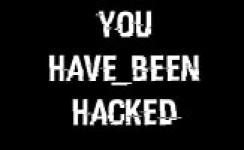- 13 Mar
- 20:35
�DRIVE�: Dissonance, Reach, Immediate steps, Validation, and Environment.

If there’s one thing every individual and every organization knows well is the fact that a significant number of change efforts crash and burn. There’s plenty of data to support the fact that your change effort is also likely to fail. We’ve seen claims and studies indicating that anywhere from one-half to over 90% of personal and organization change efforts fail!
Granted, creating a stir in which organizations see impending failure is a marketing scare tactic that has been the basis for existence for many consulting firms—sort of a “it’s-gonna’-fail-so-you-need-us” approach. The reality is that many change initiatives truly do work.
Most times, the source of failure does not lie with the model or process, but in the implementation. In observing countless change efforts, whether undertaken by a single individual (think “exercise regularly”) or by an entire organization (your organization’s last acquisition), we’ve noticed that the ability to change boils down to one word- DRIVE.
While the word “drive” certainly has ties to its dictionary definition, meaning “to push forward, often forcibly” (and many of us rely primarily on brute force in change efforts), I’m referring to more of a specific framework defined by the acronym “DRIVE”: Dissonance, Reach, Immediate steps, Validation, and Environment.
Each of the words in the DRIVE acronym is essential for supporting change. When we look at the difference between successful and failed change efforts, we clearly see that when one or more of the elements in this framework is left out, the change will not occur. DRIVE is not a step-by-step change model but, rather, a checklist of must-haves. Miss one, and the change effort falls flat.
We will be describing each of the elements in the DRIVE framework in more depth in our next several blogs on this topic, but here’s a sneak preview…
D- Dissonance: A clear understanding of the current state versus desired state. Where are we, versus where we want/need to be?
R- Reach: A clear, agreed upon vision of the end goal. What does the end objective or state look like? Is it a stretch, but possible?
I- Immediate Steps: Our start- specific steps that can be taken now… today! What will I/we do specifically, NOW, to start down the right path?
V- Validation: Measurement and assessment of value. Is it worth it? How will we measure, assess, and encourage progress?
E- Environment: The combination of conditions and surroundings that support development, survival and the ability to thrive. What systems and structure will I/we put in place to best ensure success?
Take a look at your latest change effort, whether individual (personal) or organizational. Chances are, if it hit all the above elements, it succeeded. If not, it probably went the way of most other change efforts
Ankur Sharma
ASST. MANAGER HR (TRAINING & DEVELOPMENT) at Mawana Sugars Ltd
About My future Job
myfuturejob.ph provides the quickest and the most relevant job search to its users. We achieve this through continuous innovation, based on feedback from our users.
This blog is to highlight the salient features on myfuturejob.ph that help you manage your job search better, and it is also your platform to talk to us. We look forward to your readership and welcome your feedback.





